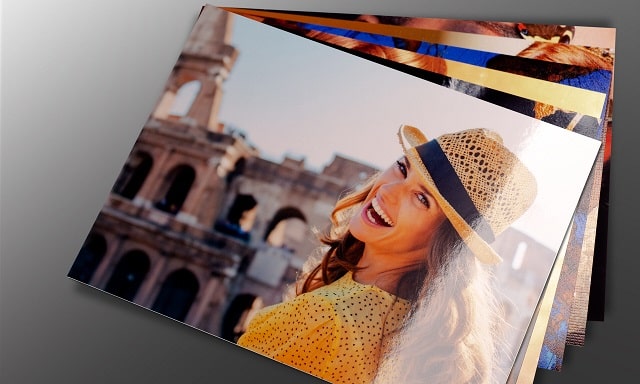Printing photographs is an art form that allows us to preserve our precious memories and showcase our creativity. However, to achieve optimal results, it is crucial to understand the different types of photo paper available in the market.
The right choice of photo paper can significantly impact the quality, longevity, and overall aesthetic appeal of your prints. In this article, I will guide you through the four main types of photo paper: glossy, matte, satin, and canvas.
By the end of this article, you will have a comprehensive understanding of each type, their features, benefits, best uses, and how to choose the right one for your printing needs.
Glossy Photo Paper: Features, Benefits, and Best Uses
Glossy photographic paper is perhaps the most common type of photo paper used by professionals and enthusiasts alike. Its defining characteristic is its shiny, reflective surface that enhances the vibrancy and depth of colors in your prints. The glossy finish also provides a smooth texture, giving your prints a professional and polished look. One of the main benefits of using glossy photo paper is its ability to produce sharp, high-contrast images with excellent color reproduction. This makes it ideal for printing photographs with rich colors, such as landscapes, portraits, and vibrant still life compositions.
In addition to its visual appeal, glossy photo paper also offers durability and longevity. Most high-quality glossy papers are resistant to fading, moisture, and fingerprints, ensuring that your prints will last for years to come. However, it is worth noting that the glossy surface is prone to glare and reflections, which can affect the visibility of your prints when displayed under bright lighting or in direct sunlight. Therefore, it is recommended to use glossy photo paper for prints that will be framed and displayed in controlled lighting environments or protected with a coating to minimize glare.
Matte Photo Paper: Features, Benefits, and Best Uses
If you prefer a more subdued and elegant look for your prints, matte photo paper is an excellent choice. Unlike glossy paper, matte paper has a non-reflective surface, which eliminates glare and reduces the visibility of fingerprints and smudges. This makes it ideal for prints that will be handled frequently or displayed in areas with varying lighting conditions. The absence of a glossy finish also allows for a wider viewing angle, ensuring that your prints can be enjoyed from different perspectives without compromising image quality.
Matte photo paper is known for its excellent color reproduction and sharpness, making it suitable for a wide range of subjects. It is particularly well-suited for black and white photographs, as it enhances the tonal range and adds a timeless quality to the images. Additionally, matte paper provides a textured surface that adds a tactile element to your prints, giving them a more artistic and handmade feel. This makes it a popular choice for fine art prints, portfolios, and exhibitions where a more sophisticated and refined presentation is desired.
Satin Photo Paper: Features, Benefits, and Best Uses
Satin photo paper strikes a balance between glossy and matte finishes, offering the best of both worlds. It has a semi-gloss surface that provides a subtle sheen without the intense reflectivity of glossy paper. This makes it an excellent choice for prints that require enhanced color saturation and depth, while still maintaining a refined and elegant appearance. Satin paper also offers improved resistance to fingerprints and smudges compared to glossy paper, making it a practical choice for prints that will be handled or displayed in high-traffic areas.
One of the key benefits of satin photo paper is its versatility. It is suitable for a wide range of subjects, including landscapes, portraits, still life, and nature photography. The semi-gloss finish enhances the vibrancy of colors, while the reduced reflectivity minimizes glare and reflections, allowing for a more enjoyable viewing experience. Satin paper is also often used for professional applications such as brochures, catalogs, and marketing materials, thanks to its ability to showcase images with exceptional detail and clarity.
Canvas Photo Paper: Features, Benefits, and Best Uses
Canvas photo paper offers a unique and artistic way to display your photographs. It mimics the texture and appearance of traditional canvas used in paintings, giving your prints a tactile and three-dimensional quality. Canvas paper is often used for prints that aim to replicate the look and feel of oil paintings or other fine art mediums. The textured surface adds depth and character to your images, creating a visually striking and immersive experience.
One of the main benefits of canvas photo paper is its ability to produce prints with exceptional color reproduction and detail. The texture of the canvas enhances the richness and vibrancy of colors, making them appear more vibrant and lifelike. Canvas prints also have a matte finish, which eliminates glare and reflections, allowing for optimal viewing from any angle and in various lighting conditions. This makes canvas paper an excellent choice for showcasing landscapes, abstract art, and portraits that require a more artistic and textured presentation.
Factors to Consider When Choosing Photo Paper
When selecting photo paper for your printing needs, several factors should be taken into consideration. Firstly, it is important to determine the purpose of your prints and the desired visual effect. Are you looking for vibrant and glossy prints, or do you prefer a more subdued and matte appearance? Consider the subject matter of your photographs and choose a paper that complements the mood, colors, and overall aesthetic.
Another crucial factor to consider is the longevity and durability of the photo paper. High-quality papers are designed to resist fading, moisture, and other environmental factors that can degrade the print over time. If you intend to display your prints for an extended period or in challenging conditions, opt for papers with enhanced archival properties to ensure their longevity.
Additionally, it is essential to consider the compatibility of the photo paper with your printer and ink type. Different papers have different coatings and absorbency levels, which can affect the print quality and color accuracy. Consult your printer’s specifications and recommendations provided by the paper manufacturer to ensure optimal results.
Lastly, consider the size and weight of the paper. Some papers are specifically designed for certain print sizes, while others offer greater flexibility. The weight of the paper also influences its durability and handling characteristics. Heavier papers are generally more robust and better suited for framing, while lighter papers are more versatile and easier to handle.
Tips for Achieving Optimal Results with Different Types of Photo Paper
To achieve the best results with different types of photo paper, consider the following tips:
- Calibrate your monitor: Ensure that your monitor is properly calibrated to accurately represent the colors and tones of your photographs. This will help you make informed decisions when choosing the appropriate paper type and settings for your prints.
- Use the correct printer settings: Adjust the printer settings according to the recommended specifications provided by the paper manufacturer. This includes selecting the appropriate paper type, print quality, and color management settings.
- Handle the paper with care: When handling photo paper, avoid touching the printing surface to prevent smudges and fingerprints. Use clean, lint-free gloves or hold the paper by the edges to minimize the risk of damaging the print.
- Allow the prints to dry: After printing, allow the prints to dry completely before handling or framing them. This will prevent smudging and ensure that the colors are fully set.
- Protect your prints: To prolong the life of your prints, consider using archival sleeves, frames, or protective coatings. These measures will shield your prints from UV radiation, moisture, and fingerprints, ensuring their longevity and visual appeal.
Where to Buy High-Quality Photo Paper
When it comes to purchasing high-quality photo paper, several options are available. Local photography supply stores often carry a wide range of photo papers, allowing you to see and feel the different textures and finishes before making a purchase. Online retailers such as Amazon, B&H Photo Video, and Adorama also offer an extensive selection of photo papers, making it convenient to compare prices, read customer reviews, and find the perfect paper for your needs. Additionally, many paper manufacturers have their own websites where you can purchase directly from them, ensuring that you are getting genuine and reliable products.
Comparing the Cost and Longevity of Different Types of Photo Paper
The cost and longevity of photo paper vary depending on the brand, quality, and type of paper. Generally, glossy and satin papers tend to be more affordable compared to matte and canvas papers. However, it is important to consider the desired visual effect and the intended purpose of your prints when making a decision. While glossy and satin papers may be more budget-friendly, matte and canvas papers often offer superior archival properties, ensuring that your prints will endure for generations.
Conclusion: Choosing the Right Photo Paper for Your Printing Needs
Selecting the right photo paper is a crucial step in achieving optimal results when printing your photographs. Each type of photo paper – glossy, matte, satin, and canvas – offers unique features, benefits, and best uses. Consider the subject matter, desired visual effect, longevity, and compatibility with your printer when making a decision. By following the tips mentioned in this article and exploring reputable suppliers, you can confidently choose the perfect photo paper for your printing needs. So go ahead, unleash your creativity, and bring your photographs to life with the art of printing.


